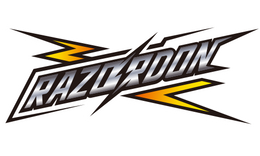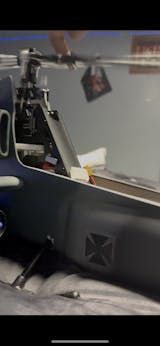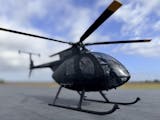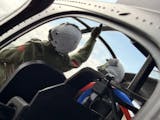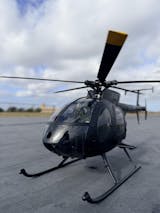RC 헬리콥터란 무엇이고 어떻게 작동하나요?
RC 헬리콥터의 기본 해부학
- 메인 로터 블레이드 - 양력과 방향 제어를 담당
- 테일 로터 - 요잉을 안정화하기 위해 토크를 상쇄합니다.
- 스와시플레이트 - 제어 입력을 로터 블레이드로 전송합니다.
- 프레임 및 전자 장치 – 모터, 서보 및 배터리가 들어 있습니다.

비행은 어떻게 달성되는가 – 양력, 토크 및 안정성
- 회전하는 메인 블레이드에서 들어 올리기
- 로터 시스템의 토크
- 꼬리 로터는 그 토크를 중화합니다.
- 순환 및 집합 피치 제어 동작 및 높이
- 안정성을 조정하기 위한 자이로스코프 또는 전자 안정화 시스템
콜렉티브 vs. 고정 피치 모델(간략한 소개)
- 고정 피치 헬리콥터는 초보자에게 친숙하지만 제어가 제한적입니다.
- 집합 피치 모델을 사용하면 완전한 3D 곡예 비행과 정밀 제어가 가능하므로 향후 진행에 적합합니다.
컨트롤러를 만나보세요 – RC 헬리콥터 컨트롤 이해
주요 컨트롤 설명
- 스로틀 : 고도 조절(왼쪽 스틱 위/아래)
- 러더( 요 ) : 헬리콥터를 좌우로 돌립니다.
- 엘리베이터 ( 피치 ) : 헬리콥터를 앞/뒤로 움직입니다.
- 에일러론(롤) : 헬리콥터를 좌우로 기울입니다.

송신기에 익숙해지기
드론과 RC 비행기의 주요 차이점
- 더 많은 기술 , 더 많은 보상이 있는 통제
- 자동 호버링이 아닌 실제 비행 역학을 배우고 있습니다.
원격 조종 헬리콥터, 드론, 그리고 원격 조종 비행기의 차이점에 대해 더 자세히 알고 싶으신가요? 다음 두 글이 도움이 될 수 있습니다.
초보 조종사를 위한 비행 전 필수 사항
안전한 비행 장소 선택
- 나무와 전선
- 사람이나 애완동물
날씨 및 가시성 확인
- 시속 5~10마일 이상의 바람은 피하세요
- 비도 없고 습도도 높지 않음
- 헬리콥터를 항상 시야에 두십시오.
비행 전 점검 수행(블레이드, 배터리, 연결부)
- 균열이나 뒤틀림이 있는지 블레이드를 검사하세요
- 배터리가 완전히 충전되었는지(과열 방지) 및 고정되었는지 확인하십시오.
- 이륙 전 모든 제어 장치를 테스트하세요
- 해당되는 경우 자이로를 보정합니다.

5분 만에 기본 비행 기술 마스터하기
1단계: 첫 번째 호버링 달성
- 먼저 송신기의 전원을 켠 다음 헬리콥터의 전원을 켜세요.
- 스키드가 가벼워질 때까지 천천히 스로틀을 높이세요.
- 작고 부드러운 스틱 입력을 사용하여 헬리콥터를 제자리에 고정합니다.
- 처음에는 땅에서 1~2피트(30~60cm) 떨어진 곳에 머물러야 합니다.
2단계: 기본 방향 이동
- 피치 컨트롤을 사용하여 부드럽게 앞/뒤로 기울이세요
- 요를 사용하여 헬리콥터의 방향을 회전합니다.
- 짧고 부드러운 전환 연습
시뮬레이터를 사용하여 학습 가속화
- RealFlight Evolution – 최고의 사실성
- AccuRC – 저렴하고 정확함

초보자가 흔히 하는 실수(그리고 이를 피하는 방법)
설정 확인 없이 이륙을 서두르다
호버링 중 과도한 수정 또는 당황
안전하지 않거나 바람이 많이 부는 환경에서 비행하기
배터리 및 유지 관리 점검 무시
- 배터리가 부족하면 비행하지 마세요
- 정기적으로 기어, 연결 장치 및 블레이드 조임 상태를 검사합니다.
- 고장이 발생하기 전에 마모된 부품을 교체하세요

안전하고 자신감 넘치는 첫 비행을 위한 마지막 팁
항공편을 짧고 통제된 방식으로 유지하세요
자신의 속도에 맞춰 연습하세요
도움과 커뮤니티 지원을 찾을 수 있는 곳
- RC 헬리콥터 Facebook 그룹에 가입하세요 또는 포럼
- 멘토링을 위해 지역 비행 클럽을 방문하세요
- YouTube에서 신뢰할 수 있는 인플루언서를 팔로우하세요

입문용 모델을 비교하고 싶거나 어디서부터 시작해야 할지 모르겠다면, 이 글을 참고하세요: 초보자를 위한 최고의 RC 헬리콥터 (2025년 가이드) . 부드러운 조종성과 합리적인 가격을 갖춘 초보자용 헬리콥터를 소개합니다.
